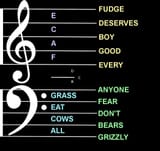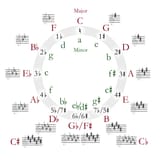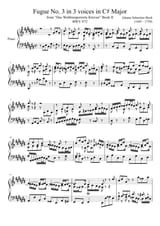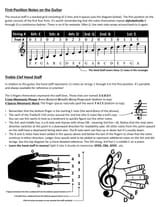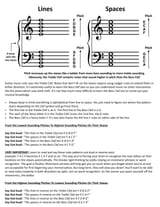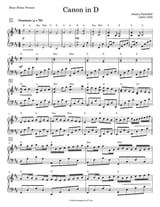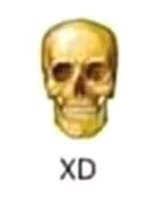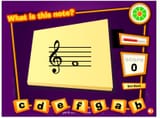>>127299448
For guitar, I use a different mnemonic phrase.
Every Guitarist Benefits Doing Fingerstyle
Also, learn to read these note groupings in reverse so you're not stuck using mnemonics. Mnemonics are fine when first learning and will get you unstuck but will slow you down over time so the faster you ween yourself off them, the better.
For example...
FACE the treble clef spaces, becomes ECAF
EGBDF becomes FDBGE. If you use the Bass Clef, then those lines are GBDFA which becomes AFDBG. It's spaces ACEG becomes GECA.
Also, you have a hand I assume? Well guess what? It has 5 lines and 4 spaces on it to match your fingers. So you have a portable practice tool with you at all times. Just remember the bottom finger is the E of Every of the mnemonic phrase I told you about earlier. You can add the D note in the space below the E and the G note above the last line (the F note) to extend the staff by 2 extra notes. Ledger lines are then used after this for further extension which can be confusing but its doable with practice. But what I've taught you already covers strings 4 through 1 on the guitar in frets 1 to 3 (first position).
the G, is ALWAYS the second line on the treble clef. The swirl of the treble clef G symbol circles the 2nd line which is the G note...so G symbol is telling you as a landmark, the 2nd line is a G.
The 3rd like is a B note. 3 rhymes with B. 3B is how I remember this. You can also say the 3rd line is IN-B-TWEEN the other lines since it's the middle line on the staff. This 3rd line is also where the note stems change from upward facing to downward facing for readability sake. So this is another clue for you.
But yes, everything is alphabetical EFGABCDE... on and on and on since there are only 7 natural notes (ABCDEFG...back to A again. NOT H).

